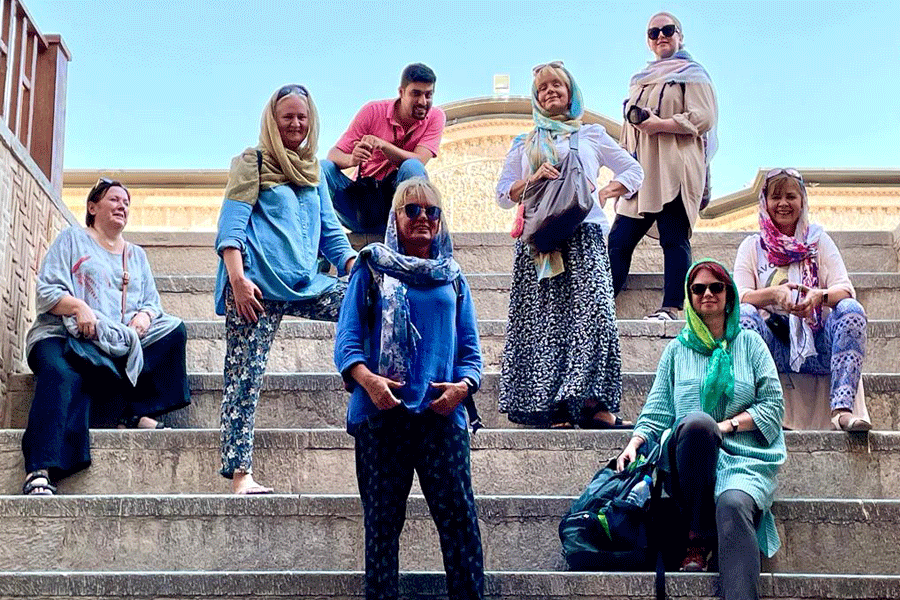
Dress Code in Iran: A Guide for Travelers
In this article you’ll find all information about Iran Dress Code for Tourists. Dress codes vary across countries and reflect cultural norms. In Iran, as an Islamic country, adhering to the local dress code is important for both travelers and locals to feel comfortable and respected.
Due to widespread media rumors, Iran’s dress code has become a major concern for travelers. However, the Islamic guidelines on clothing are not as strict as they might appear. Contrary to common belief, Iranian women embrace colorful clothing and have a keen sense of fashion, skillfully choosing stylish outfits while still adhering to the dress code.
Iran Dress Code for Tourists: What You Need to Know
In this guide, we’ll walk you through the details of Iran’s dress code and highlight just how flexible it can be.
Following the Iranian Revolution in 1979, Islamic laws were implemented, mandating that women wear the ‘Hijab.’ In Islam, the Hijab refers to modest attire, particularly covering the head.
Initially, most women wore the ‘Chador,’ a long black garment that covers the entire body from head to ankles.
Gradually, many women transitioned from wearing the Chador to opting for the ‘Manteau,’ a long coat, complemented with a shawl (headscarf) to cover their hair. As fashion evolved, Manteaus became shorter, and vibrant colors became popular. Today, Iranian women often wear short or open Manteaus over shirts and jeans or long skirts, complemented by colorful shawls to cover their heads.
Hijab
In Islamic terms, Hijab refers to modest dressing, though it is now commonly associated with covering the head. In Iran, both local women and tourists are required to wear a Hijab in public, meaning they must cover their hair. Many Iranian women choose to cover just the top of their head, allowing a bit of hair to show from the front or back of the scarf. The most common choice is a headscarf, easily found in local shops, though hats are also an option, especially in winter. The hijab can also refer to covering the body and dressing in accordance with the Iranian dress code, as outlined in this article.
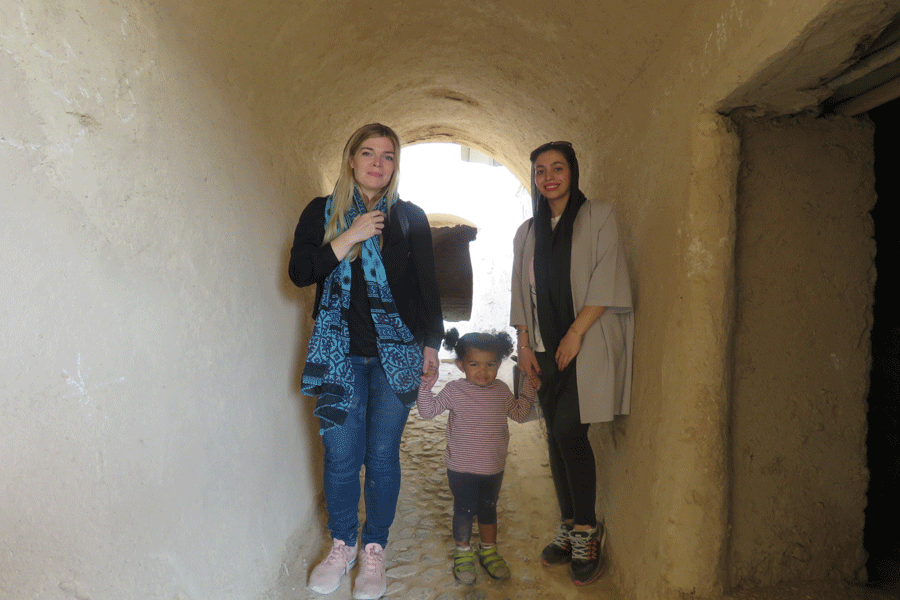
Are Tourists Required to Wear Hijab in Iran?
Yes, travelers in Iran are expected to follow the country’s general laws, including those related to women’s clothing. As an Islamic country, Iran requires all women, regardless of nationality, to wear Hijab. However, the rules are somewhat more lenient for tourists, and allowances are made for their unfamiliarity with the practice. It’s important to note that women are required to wear Hijab as soon as they disembark from the plane at an Iranian airport.
Clothing Guidelines for Indoor Spaces in Iran
Speaking about the dress code in Iran and the rules of the Hijab belong to public places. However, travelers and locals enjoy more flexibility in their clothing choices within private homes or hotel rooms. However, if visiting a local’s home, it’s respectful to avoid revealing attire in consideration of their customs. You may also remove your Hijab in women-only spaces like beauty salons and gyms. Keep in mind that cars, hotel lobbies, and restaurants are considered public areas, where the dress code should still be observed.
- Dressing appropriately for religious sites differs slightly from casual attire.
- During adventure tours in nature, you have more flexibility in your attire.
- Women may be provided with a chador to wear in religious monuments if it is required.
Women’s Dress Code in Iran
Women are required to wear hijab in public spaces, including hotel lobbies, restaurants, and historical monuments.”
They should wear a loose-fitting sweater, tunic, or Manteau that extends to cover at least the lower waist. Sleeves should reach the elbows, and clothing should cover the legs up to just above the ankles. Jeans, leggings, ripped jeans, and loose skirts or dresses are permitted.
Women must cover their hair with a headscarf or shawl, which can be easily bought at markets or shopping centers across Iran. It’s acceptable to allow the front part of your head to show and to wear the shawl halfway, as many Iranian women do. Covering the neck is not mandatory, and the shawl can be worn loosely.
There are no specific restrictions on footwear in Iran, so women can wear sandals, boots, and other types of shoes.
All colors are permitted, but see-through clothing should be avoided.
Painted nails are perfectly acceptable in Iran. Just like women everywhere, Iranian women enjoy colorful nail polish. Wearing nail polish of any kind and color is normal and acceptable. “Indeed, long nails, nail extensions, and polished nails are popular among Iranian women, so you can confidently use nail polish during your visit.

Legs and Body Coverage
The Iranian dress code requires women to cover their legs down to the ankles and wear loose tunics or coats that extend to the lower waist with long sleeves. Contrary to common myths, skinny pants and leggings are quite popular in Iran. Long dresses and skirts are also commonly worn, especially in the summer, as long as they are not see-through. For men, pants must be long, and sleeveless shirts are not allowed, though t-shirts are acceptable. These guidelines apply only in public areas.
Colorful Clothing In Iran
Iranians value fashion and carefully choose their clothing, so wearing colorful outfits is encouraged and widely accepted. Men frequently wear t-shirts in various colors, and many Iranian women enhance their style with colorful headscarves and Manteaus. As a traveler, you can certainly bring your colorful clothes, provided they adhere to the overall dress code in Iran.
Footwear
In Iran, there are no restrictions on footwear. Both men and women can choose from a variety of options, including boots, high heels, sandals, and more, based on weather conditions and personal preference. Sandals, in particular, are quite popular among Iranian women during the summer.
Manteau
A Manteau refers to a long overcoat that extends to cover the lower waist. It is a staple of Iranian women’s wardrobes, typically worn over a shirt and paired with long pants or jeans. Manteaus come in various materials to suit different weather conditions and are available in many colors and styles. If you don’t have a long coat or tunic, you can easily purchase a Manteau at boutiques or shopping centers throughout Iran for your trip.
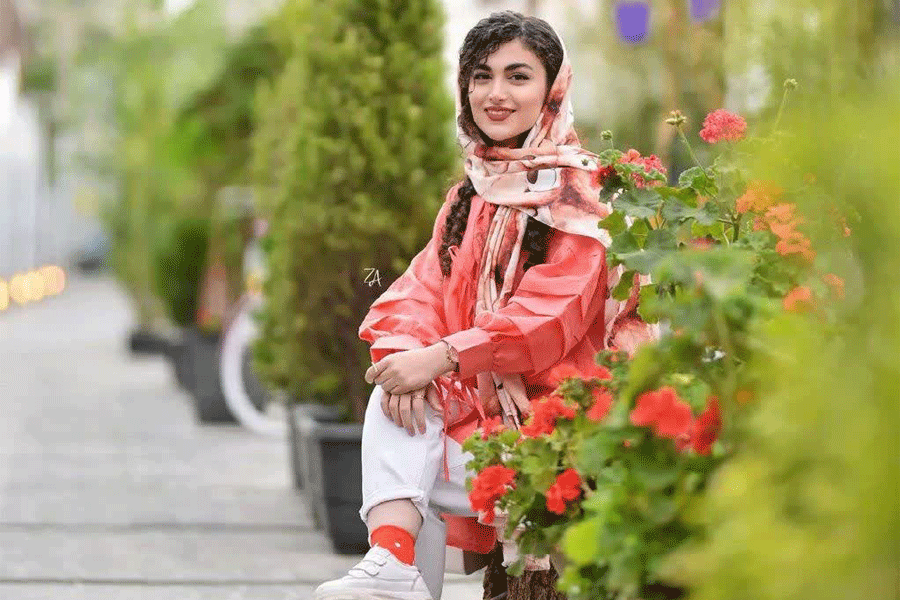
Makeup
Many Iranian women enjoy wearing makeup both in their daily lives and for special occasions. Daily makeup typically includes foundation, mascara, and lipstick, while heavier makeup, such as eyeliner and eyeshadow, is often worn for parties and gatherings. Bold eyeliner, highlighters, and vibrant lipstick colors are also widely accepted. Makeup use is common across all ages, especially in larger cities. If you enjoy makeup, you’ll fit right in, so feel free to bring your makeup kit with you.
Tattoos
Tattoos have gained popularity in recent decades, particularly among younger individuals. If you have visible tattoos, there’s no need to cover them while in Iran.
Chador
The Chador is a traditional garment worn by women in Iran and some other countries. It is typically a round piece of cloth, often black or white, that covers the body from the top of the head to the toes. Sleeveless and held in place either by hand or with a pin, the Chador provides complete coverage.
Wearing a Chador
Wearing a Chador in Iran is generally optional except in religious places such as mosques and holy shrines. If you choose to wear a Chador or are required to, it’s straightforward: simply hold the cloth with your hand. Many Chadors come with a flexible strap to help keep it in place, and you can also hold the front for additional coverage. Chadors are typically worn over your daily clothes. In religious sites, you can usually borrow a Chador if needed. Chadors in these places often feature patterns and colors, while those worn by religious women by choice are typically black and simple. Most women in Iran prefer Manteaus or tunics over Chadors.
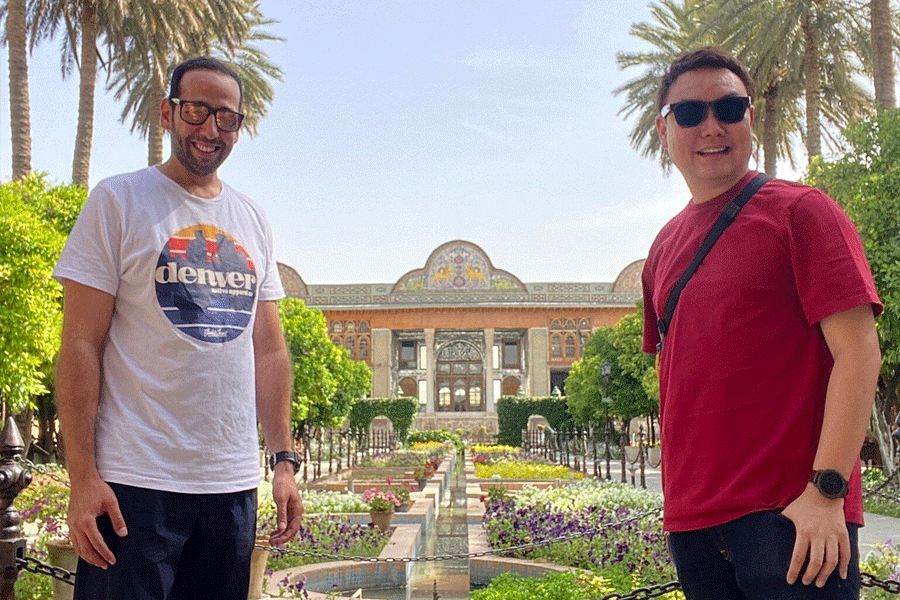
Men’s Dress Code in Iran
The dress code for men in Iran is relatively straightforward. Most types of clothing are permitted, except for sleeveless shirts and shorts. These guidelines apply only in public areas.
Tattoos for Men
Tattoos have gained significant popularity in recent decades, particularly among younger people. If you have visible tattoos, there is no need to cover them.
Essential Packing List for Iran:
- Underwear and bras
- Socks
- Headscarf
- Hat: for sun protection
- Long pants, jeans, leggings, skirts, or long, loose dresses (alternatives)
- A coat or tunic that covers the lower waist
- Sandals for summer and boots for winter
- Comfortable walking shoes
- Shampoo, conditioner, and lotion
- Dry shampoo: useful for camping or hiking
- Sunscreen: SPF 30 or higher
- Toothbrush and floss (most hotels only provide toothpaste)
- Deodorant
- Baby powder: to prevent heat rash
- Makeup
- Mosquito bite relief: especially if traveling to northern or southern regions
- Hairbrush
- Sunglasses
- Personal medication and a copy of your prescription
- Toilet paper: it may not be available in many public restrooms
- Travel insurance and passport
- Cash
- Chargers, headphones, and cables
- Adapters: Iran uses 220V and European-type plugs (Type C)
- Portable charger
- Travel pillow
Note: Most items on this list can be purchased in Iran if you forget to pack them.
Note: If you plan to go trekking or skiing, be sure to check the related pages for a list of additional essential equipment.
Items to Avoid Packing for Iran
Alcohol: Alcoholic beverages are banned in Iran and will be confiscated at the airport.
Drugs and Marijuana
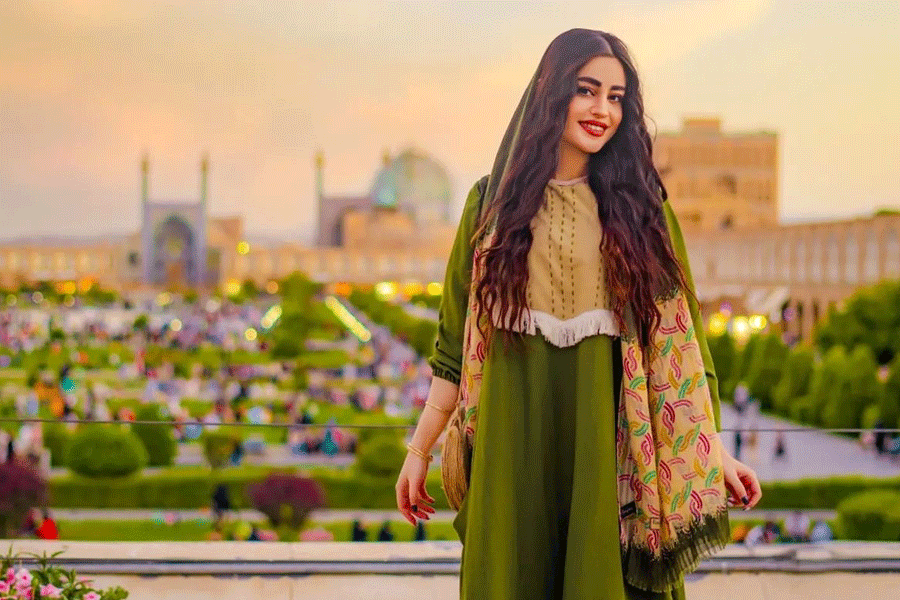
Last-Minute Tips for Dressing in Iran
Iranians are warm and welcoming to tourists and do not expect you to dress in traditional Muslim attire.
The dress code regulations apply only in public spaces. You can wear whatever you like in your hotel room and private homes.
The dress code must be observed as soon as you arrive at the airport.
If your shawl falls off, don’t worry—just stay relaxed and put it back on.
In smaller towns like Yazd, you might receive curious looks compared to larger cities due to the more traditional atmosphere. However, this is not intended to offend you in any way.
Lastly, while the Iranian dress code might appear stricter compared to other countries, it has become more flexible since the revolution. If you’re unsure about what to wear or don’t have appropriate clothing, a long tunic paired with a headscarf will be sufficient. You can always buy colorful shawls and comfortable Manteaus at any bazaar or shopping center once you’re there.

